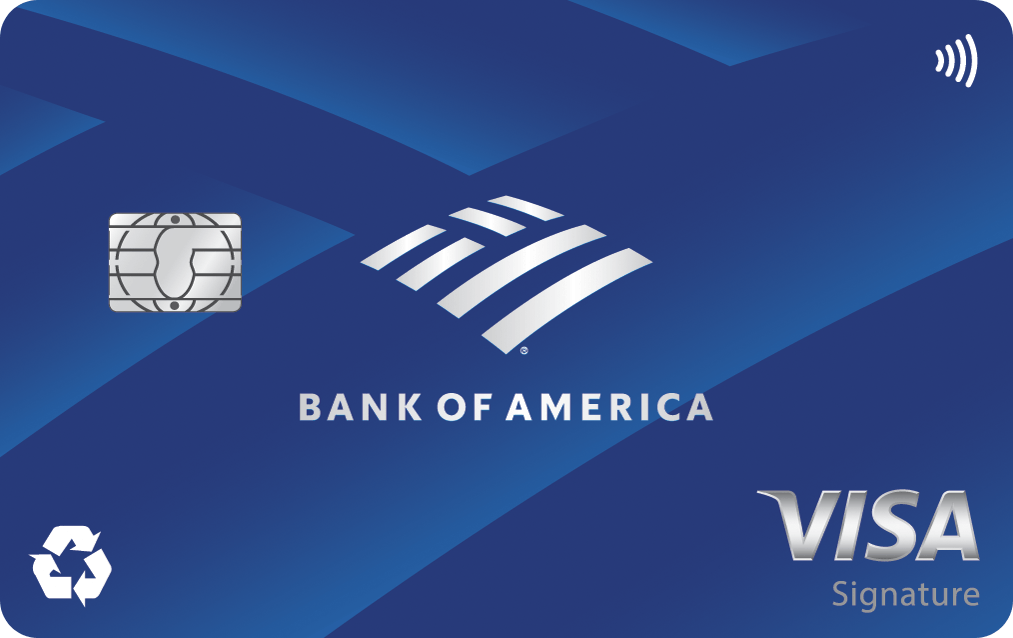In a Nutshell
Teens can apply for their own credit cards when they turn 18. The best credit cards for teens have low credit requirements and keep costs to a minimum. You can help teens under 18 build credit by adding them as an authorized user on one of your credit cards.Some may scoff at the idea of credit cards for teens. But there are a few reasons why you may want to consider allowing your teen to use one.
First, using a credit card could help your teen learn how to handle credit responsibly. What better time for your teen to get their first credit card than when you’re still around to offer supervision and advice?
Second, using a credit card with care can help your teen begin to build credit. That way when the time comes to apply for a car loan or other financing, they may be able to do so without a co-signer.
Teens can begin building credit at a young age by becoming authorized users on their parents’ credit cards. At 18, teens can apply for a credit card in their own name.
The best teen credit cards have low credit requirements and keep costs to a minimum. Here’s our take on the best credit cards for teens to help you find the right one for your situation.
- Best for simple cash back: Capital One Quicksilver Student Cash Rewards Credit Card
- Best for commuters: Discover it® Student Chrome
- Best for travel: Bank of America® Travel Rewards credit card for Students
- Best for a low deposit: Capital One Platinum Secured Credit Card
- Best for fair credit: Capital One QuicksilverOne Cash Rewards Credit Card
Best for simple cash back: Capital One Quicksilver Student Cash Rewards Credit Card
Here’s why: The Capital One Quicksilver Student Cash Rewards Credit Card offers a flat cash back rate of 1.5% on every purchase, alongside a modest sign-up bonus. A simple cash back rate can help students learn how to use a credit card without getting bogged down in complex rewards and spending categories.
- No annual fee — The card doesn’t charge an annual fee.
- Sign-up bonus — You can earn $100 in cash back after spending $300 on purchases within the first 3 months of account opening. This isn’t the highest bonus around, but the spending requirement is reasonable.
- Open to students — Students at a university, college or community college can apply for the card.
Learn more about the Capital One Quicksilver Student Cash Rewards Credit Card.
Best for commuters: Discover it® Student Chrome
Here’s why: The Discover it® Student Chrome offers 2% cash back on gas station and restaurant purchases (on up to $1,000 in combined purchases each quarter), then 1%. And all other purchases earn 1% cash back. The rewards earned with this card could add up if your teen is driving to school or work every day.
- Cashback Match — If you’re a new to Discover, at the end of your first year with the card, Discover will match all of the cash back you’ve earned to double your rewards.
- No annual fee — Discover it® Student Chrome doesn’t charge an annual fee.
- Credit score not required — Discover doesn’t require applicants to have a credit score, but you must be a student to apply.
Learn more about Discover it® Student Chrome.
Best for travel: Bank of America® Travel Rewards credit card for Students
Here’s why: The Bank of America® Travel Rewards credit card for Students charges $0 foreign transaction and annual fees, making it a good option for teens who are studying abroad or planning to travel while in school.
- Rewards — Cardholders earn an unlimited 1.5 points for every $1 spent on purchases.
- Sign-up bonus — You can earn 25,000 online bonus points after spending $1,000 on purchases within 90 days of account opening. Overspending to earn a sign-up bonus is an easy trap to fall into — so advise your teen that applying for the card strategically before a planned large purchase is a good idea.
- Credit-building tools — Bank of America lets you view your updated FICO® score each month, and you can stay on top of your payments by using the mobile app.
Learn more about the Bank of America® Travel Rewards credit card for Students.
Best for a low deposit: Capital One Platinum Secured Credit Card
Here’s why: With the Capital One Platinum Secured Credit Card, your teen can get an initial credit limit of at least $200 with a security deposit as low as $49. If your teen doesn’t qualify for the $49 security deposit, they could be required to deposit $99 or the full $200 instead. Teens who would like a higher credit line can deposit more.
- Build credit — The Capital One Platinum Secured Credit Card is great for teens who are trying to build their credit. Credit activity will be reported to all three major credit bureaus. And cardholders may be considered for a higher credit limit in as little as six months.
- No rewards — One of the only downsides to this card is that it doesn’t offer any ongoing rewards.
- No annual fee — The card has a $0 annual fee, so if your teen is looking for a secured card that has reasonable deposit requirements, the Capital One Platinum Secured Credit Card is hard to beat.
Read more about the Capital One Platinum Secured Credit Card.
Best for fair credit: Capital One QuicksilverOne Cash Rewards Credit Card
Here’s why: The Capital One QuicksilverOne Cash Rewards Credit Card is available to applicants who aren’t students — and it’s designed for people who have a limited credit history. Plus, it can help your teen build credit and earn rewards.
- Rewards — You can earn 1.5% cash back on every purchase you make.
- Annual fee — The card has an annual fee of $39.
- Credit line reviews — You’ll be considered for a credit line increase in as little as six months with the card. If building credit is your primary goal, a higher credit line can help you keep your utilization down — and eventually apply for a cash back card with no annual fee.
Read more about the Capital One QuicksilverOne Cash Rewards Credit Card.
What you need to know before you get a credit card for your teen
If you’re thinking about getting a credit card for your teen, here are a few things you’ll want to keep in mind.
Credit card options for minors
If your teen is under 18, they won’t usually be allowed to have their own credit card. And even after they turn 18, it may be difficult for them to qualify for a credit card on their own.
But that doesn’t mean they can’t begin to build credit. There are two main ways to get credit cards for teens.
Authorized users
Until they turn 18, becoming an authorized user is typically the only way your teen will be able to get access to a credit card.
Most credit card issuers allow cardholders to add their teens as authorized users. In fact, depending on the terms of the credit card, you can add your children as authorized users before they even enter high school. In its “Parents, Kids & Money Survey” published in 2019, asset management firm T. Rowe Price found that 17% of children age 8 to 14 had a credit card.
Worried about your teen having access to your full credit limit? You could apply for a new credit card and ask the issuer to set a low credit limit on the card. Then you could make your teen an authorized user on the low-limit credit card instead of your daily-use card.
As an authorized user, they can begin to establish a credit history. And this could help them qualify for a student credit card — or any other kind of financing that requires a credit check — down the road.
But if your teen doesn’t handle their credit card responsibly, you can remove them as an authorized user at any time.
Co-signers
Once your teen turns 18, they can apply for a credit card in their own name. But the Credit CARD Act of 2009 requires everybody under 21 to provide proof of income in order to qualify for a card on their own.
Ultimately, this law is in place for your teen’s own good. It’s supposed to protect young people from piling up debt that they have no way to repay. But it could make it more difficult for your teen to qualify for a student card if they’re not working when they’re in college.
If your child is under 21 and can’t provide proof of income, they’ll need a co-signer on a credit card application.
Before co-signing on your teen’s credit card, keep in mind that the account payment history will appear on your credit report as well as your child’s. And late payments will have a negative effect on your credit scores. You’ll want to consider the co-signing pros and cons carefully before making a decision.
Secured cards
Student credit cards can be a convenient choice for teens. But if your teen isn’t enrolled as a college student, they won’t qualify. In this case, a secured credit card could be a good option.
With secured credit cards, you or your teen will need to put up a security deposit as collateral. The deposit is often the card’s credit limit.
Secured credit cards, like unsecured credit cards, can help your teen build credit. But you’ll want to make sure that the credit issuer reports card activity to all three major credit bureaus.
After a certain number of on-time payments, the card issuer may automatically graduate your teen’s secured card to a partial or fully unsecured version of the card. And once they’ve built up their credit scores, your child can apply for unsecured credit cards that may offer higher credit limits or better rewards. Just keep in mind that every application likely counts as a hard inquiry, which could affect their credit scores.
Next steps: Teaching your teens about how to use credit cards
If your teen gets a credit card, you’ll want to take every opportunity to teach them good credit habits. Stress the importance of making on-time payments, keeping a low credit utilization rate and avoiding unnecessary credit inquiries.
These are just a few tips that can help your teen build their credit now and handle credit responsibly throughout their lives. For more ideas, check out our guide on how to build credit from scratch.









